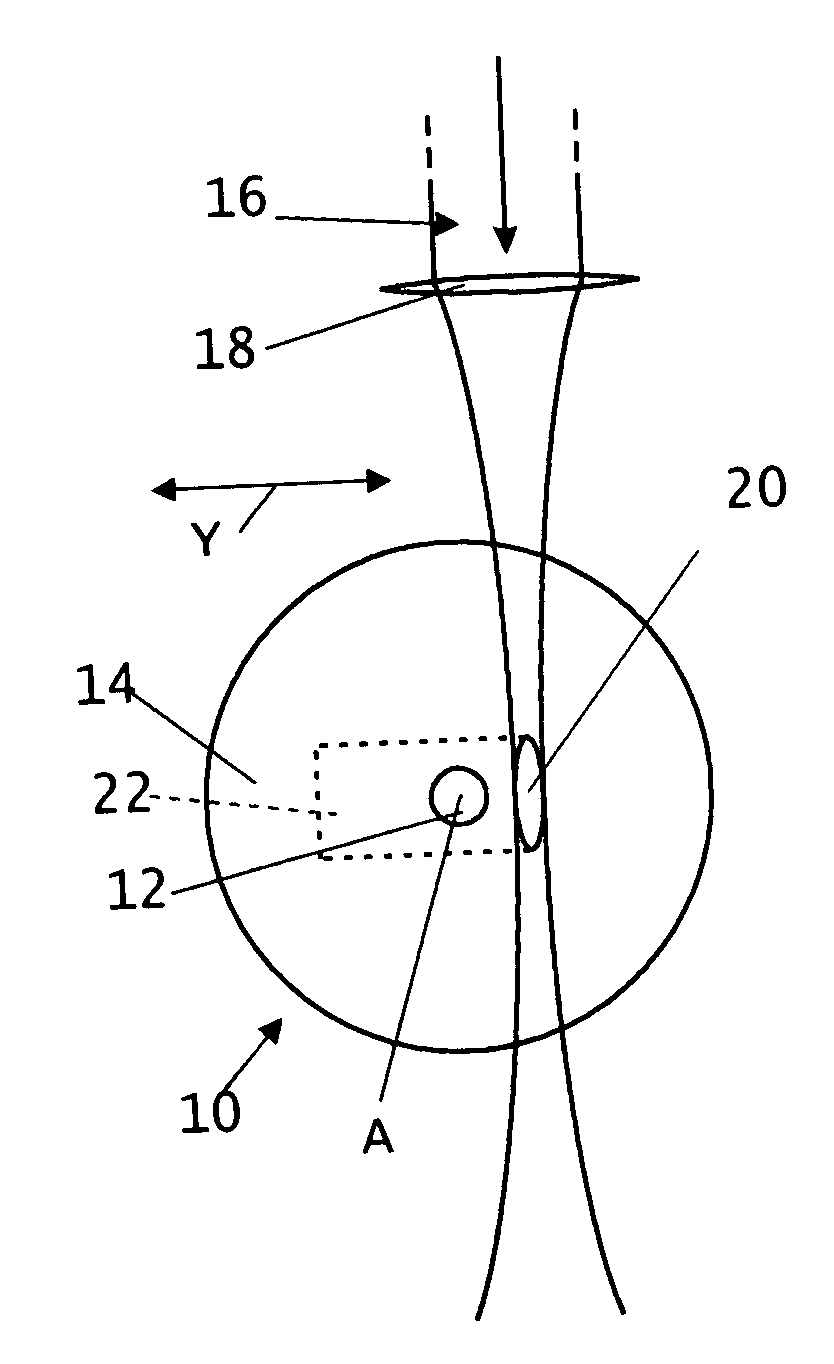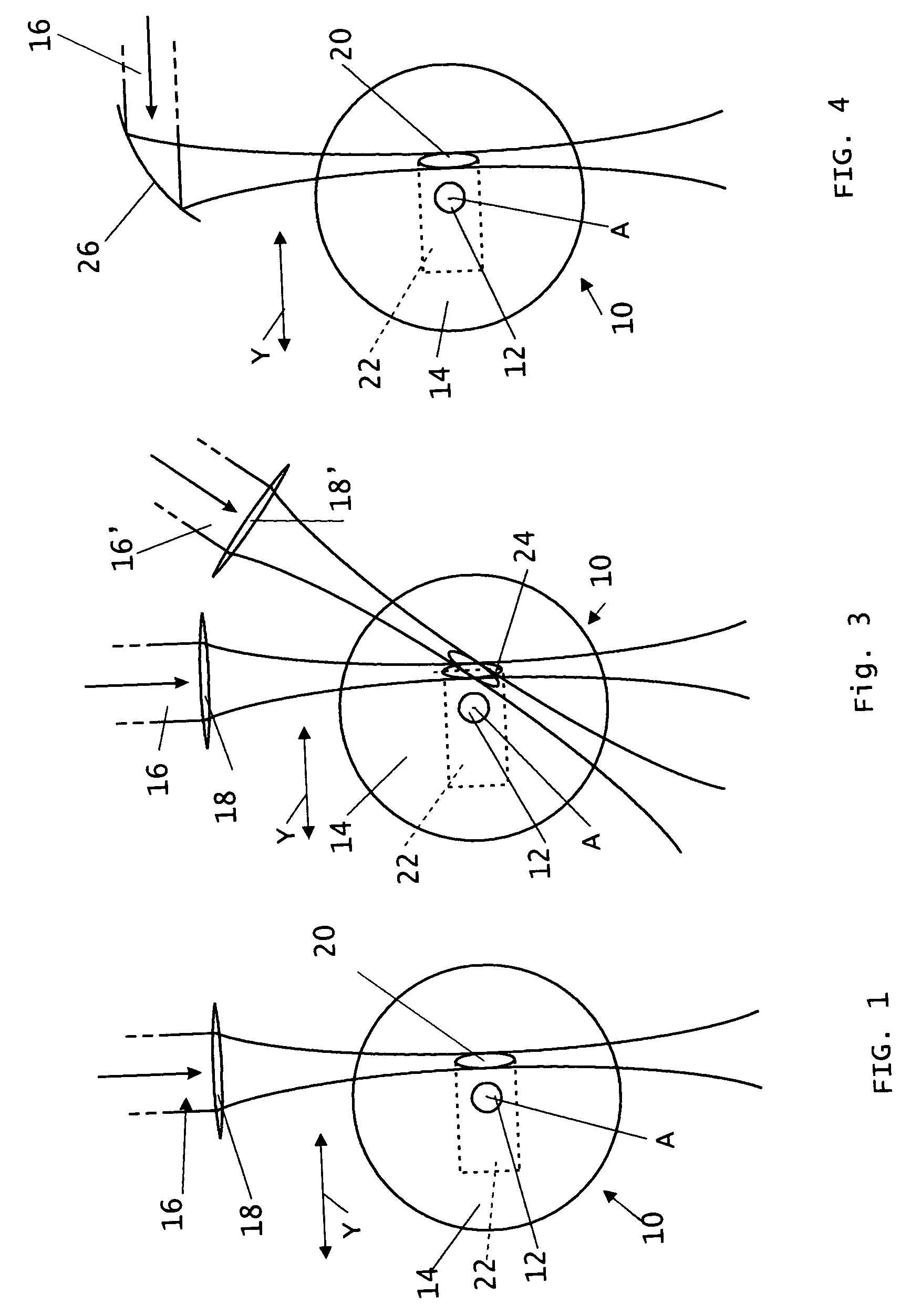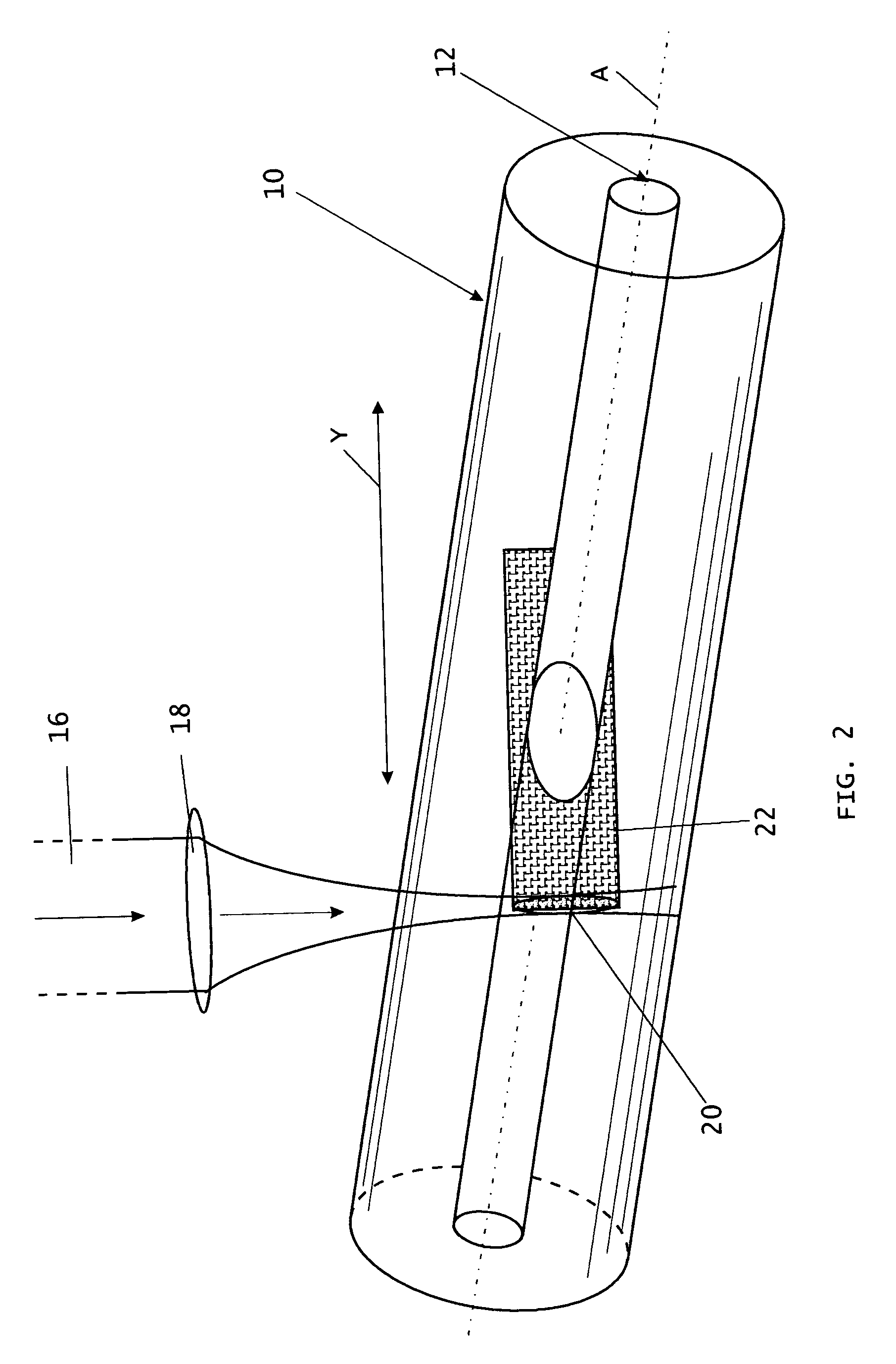Microstructuring optical wave guide devices with femtosecond optical pulses
a technology of optical wave guide and microstructure, which is applied in the direction of instruments, active medium shape and construction, cladding optical fibre, etc., can solve the problems of localized melting and compaction of materials, and concurrent increase of the index of refraction
- Summary
- Abstract
- Description
- Claims
- Application Information
AI Technical Summary
Benefits of technology
Problems solved by technology
Method used
Image
Examples
Embodiment Construction
[0037] The basic principles of the present invention will be described immediately hereinafter with particular reference to what is shown in FIGS. 1-5. Further details respecting practical applications of the invention will be described thereafter with reference to FIGS. 6 to 15C. Information respecting the laser and other operating aspects of the invention will then be described, as they are common to the different physical manifestations of practicing the method.
[0038] The Basics
[0039] FIG. 1 generally illustrates the basic principle of this invention, being the creation of a zone of permanently altered refractive index characteristics in a waveguiding device such as an optical fiber 10. The fiber is shown as including a central core 12 and a cladding 14 both of which are generally symmetrical about a longitudinal axis A. A laser, to be described in greater detail hereinafter, is positioned relative to the waveguiding device so that a collimated beam 16 thereof is directed towards...
PUM
| Property | Measurement | Unit |
|---|---|---|
| Length | aaaaa | aaaaa |
| Time | aaaaa | aaaaa |
| Time | aaaaa | aaaaa |
Abstract
Description
Claims
Application Information
 Login to View More
Login to View More - R&D
- Intellectual Property
- Life Sciences
- Materials
- Tech Scout
- Unparalleled Data Quality
- Higher Quality Content
- 60% Fewer Hallucinations
Browse by: Latest US Patents, China's latest patents, Technical Efficacy Thesaurus, Application Domain, Technology Topic, Popular Technical Reports.
© 2025 PatSnap. All rights reserved.Legal|Privacy policy|Modern Slavery Act Transparency Statement|Sitemap|About US| Contact US: help@patsnap.com



